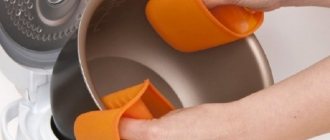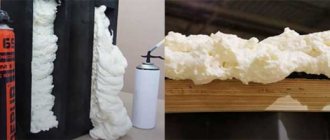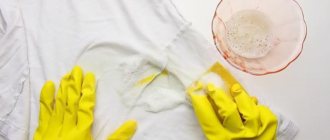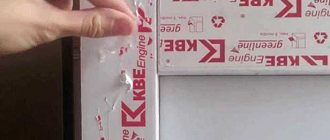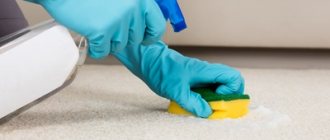Not only apartment owners are faced with the fact that brown water flows from the tap. Owners of private houses are also familiar with this problem, although they do not use the services of public utilities, but have individual wells. There are several ways you can easily deal with the problem of rusty water. This article will help you figure it all out.
Why is the presence of rust in water dangerous?
The iron content in water has an acceptable limit of 0.3 mg/d3. As its concentration increases, a characteristic odor, orange tint, and metallic taste appear. Large amounts of iron oxide negatively affect health:
- tooth enamel deteriorates;
- allergic reactions occur;
- there is a feeling of tightness on the skin;
- the functioning of the gastrointestinal tract and other internal organs is disrupted.
Impurities are no less dangerous for the functioning of water heating devices and plumbing fixtures. Natural sources contain divalent iron hydroxide Fe(OH) 2. After interaction with oxygen, the composition turns into Fe(OH) 3 and precipitates as an insoluble precipitate. This suspension settles on the walls of the bathtub, sink, toilet, and damages the dishwasher, washing machine, and boilers. Plaque covers the walls of pipes, the inside of taps, and mixers, reducing their service life.
Taking care of their health and the condition of their appliances falls on consumers, so they need to know how to clean rust.
To effectively solve a fluid contamination problem, it is important to find out the cause. If the problem is in the pipeline, then the best way to remove rust is to install plastic pipes.
Popular makes and models
In the KVANTA+ store in Tyumen you can buy filters from leading manufacturers. The company offers a wide selection of models at affordable prices.
"Aquaphor"
The Russian company produces many cartridges and filters for household use. Particularly popular is the Aquaboss-1-02 device, which is distinguished by its ease of use and budget price. If the module fails, you can find an inexpensive replacement.
Aquaphor produces many cartridges and filters.
Buy
"Geyser"
The company's product range includes filters of different price segments. The Geyser 1PF model provides effective water purification and is intended to protect boilers and washing machines from scale.
Buy
"Barrier"
"Barrier Smart Opti-Lite" is an inexpensive Russian-made jug with a stylish body design and support for up to 8 types of cassettes. 1 filter element can process up to 350 liters of liquid.
Barrier is a jug with a stylish design.
Buy
BWT
The Austrian company BWT produces the Protector mini 1/2 CR model. This filter is compact and has a capacity of up to 1.6 cubic meters per hour.
Honeywell
The FF06 1/2AAM device from the German company Honeywell belongs to the mechanical category. The brass body can withstand water temperatures up to 70°C.
Honeywell - water purification device.
Buy
Atoll
Atoll's production facilities are located in Russia and the USA. The Atoll A-550m STD/a-560Em model is suitable for a family of 4-5 people. The complex device supports 5-stage cleaning.
Buy
Atlas Filtri
In the catalog of the Italian company Atlas Filtri, the Senior Plus Hot 3P-AFP SX ½ model is in particular demand. The mechanical cartridge-type device is able to cope with any type of suspended particles.
Atlas Filtri is an Italian filter.
Organic
The Ukrainian company produces inexpensive drinking filters with a simple design and operating principle. The Organic Master series is aimed at basic liquid purification, while it can be converted into a reverse osmosis system.
Aquafilter
The Polish brand Aquafilter gained popularity after the release of the FHHOT34-HPR-S model. The filter device contains a glass and a lid. The cleaning cartridge must be purchased separately.
Aquafilter is a popular Polish brand.
EcoWater Systems
The eXPERT series deferrizers from EcoWater Systems are advanced systems for processing large volumes of liquid. The Oxy 700+ model allows you to get rid of manganese, hydrogen sulfide and iron in water, which are often present in artesian wells.
Water purification methods
Metal compounds negatively affect the physical and chemical parameters of the liquid, its color and taste. Bringing indicators back to normal requires purifying rusty water. Several methods have been developed for this, varying in complexity and financial costs.
- Settling is the simplest method; it consists of pouring liquid into a container and letting it settle until a brown sediment falls to the bottom. The purified water is carefully drained. The method is economical, but requires time. Disadvantages of the method: it is not suitable for large volumes; the quality of the liquid is more suitable for technical needs.
- Mechanical cleaning with special filters with a removable cartridge or backfill. The cartridge mesh is installed in the counter or on the faucet; it traps rust particles. the degree of purification depends on the size of the cells. The filter needs to be washed periodically. Models with backfill use sand, expanded clay, and coal as filter materials. The metal deposit is retained by the bulk material.
- Reverse osmosis is an effective but expensive industrial system. It uses a membrane that allows only water molecules to pass through. The purification process does not require chemical reagents, it is safe, improves the taste of water, and removes rust and other impurities.
- Sorption device using activated carbon. Typically offered as a pitcher filter with one replaceable cartridge. It removes metals and other harmful substances from water well. The small size of the device allows you to prepare clean water only for drinking.
- Deferrization of water with special reagents. Among the substances added to oxidize the metal and convert it into solid particles are chlorine, potassium permanganate, and coagulants. Oxidation also occurs under the influence of ozone.
Each method has strengths and weaknesses; the choice of device depends on the composition of the water and financial capabilities.
One of the modern methods of water disinfection is disinfection with ultraviolet radiation. You can order equipment for the safe destruction of harmful microorganisms without losing the taste of water by calling:
Source
Types of plumbing systems and their features
High-quality purification of water from rust should consist of several stages - removal of large mechanical particles and elimination of colloidal suspensions.
For this purpose, filters of various designs are used.
Trunk
Main filters are installed on cold and hot water supply pipes .
They remove mechanical impurities, unpleasant odors and tastes from water.
Important! Purified water is necessary for the stable operation of some types of household appliances. High concentrations of mechanical particles and dissolved salts significantly reduce the working life of washing machines and dishwashers and shorten their trouble-free service life.
For more information about mainline filters, watch the video:
Mesh
This is a group of devices consisting of a brass body, inside of which a stainless steel mesh element is placed. The size of the mesh cells varies from 100 to 900 microns. The smaller the cell, the better the water is purified.
Among the advantages of mesh filters:
- relatively low price,
- resistance to pressure changes and high temperatures,
- good throughput,
- no operating costs.
Over time, the mesh becomes clogged with particles of rust and sand. But it is easy to clean from dirt. It is enough to rinse the mesh under a strong stream of water.
Prices for mesh filters start from 400 rubles . High-quality mesh filters are available from such well-known European manufacturers as BUGATTI, HERZ, HONEYWELL.
Cartridge
Cartridge main filters consist of a flask (housing) and a replaceable cartridge . They can be single-stage or multi-stage.
- Single-stage - inexpensive models that provide cleaning only from large particles of rust and other contaminants.
- Two-stage filters, in addition to a rough mechanical cleaning unit, are equipped with a carbon cartridge. It traps tiny particles of rust, as well as organic compounds and other contaminants.
- The three-stage filter is complemented by a flask with an ion exchange element. It removes iron, magnesium and calcium ions from water.
The cost of a cartridge filter depends on its performance, as well as the type of material from which the flasks and filter elements are made. The price range can be from 900 to 9000 rubles.
Flasks of inexpensive models are made of plastic. Stainless steel flasks are considered the most reliable and durable. The following companies offer an extensive line of cartridge filters:
- AQUAPHOR (Estonia),
- GEYSER (Russia),
- BRITA (Germany),
- ZEPTER (Sweden).
Automated filtration systems
Such water treatment systems are usually used in country cottages. They consist of a battery of universal flask housings with various filter media and an automatic control unit.
Each filter operates according to an individual program, which is selected depending on chemical parameters and water consumption.
Automation ensures periodic washing of filters and also optimizes water consumption.
The cost of an automated system depends on:
- its type (continuous action or with a break for regeneration),
- operating principle of the control unit (electronic or electromechanical),
- other parameters.
It is calculated individually at the design stage.
Jug type cleaners
The principle of operation of a jug filter is no different from flow-through models under the sink. Water is purified from harmful impurities by seeping through a layer of filter material.
But the jugs do not need to be connected to a water supply or a water tank.
To put the filter into working condition, just place it on the table and pour water. Cleaning will take a few minutes.
When choosing a filter jug, the following parameters are important:
- capacity (depending on the model, ranges from 1.5 to 6 liters)
- type of cartridge (regular, bactericidal, for hard water)
- cartridge resource (from 150 to 500 l)
- cartridge resource indicator (mechanical or electronic)
Attention! After the cartridge has exhausted its resource, it must be replaced with a new one. Otherwise, the contaminants accumulated in the filter will begin to flow into the drinking water.
The average cost of filter jugs ranges from 600 to 2000 rubles. These products are presented in the range of companies:
- Aquaphor (Estonia);
- Barrier (Russia);
- Brita (Germany);
- Geyser (Russia).
We recommend an article on the topic
Our recommendations: which is the best water filter pitcher?
Reverse osmosis systems
Reverse osmosis filters are used to obtain high-quality drinking water. Typically, they are installed under the kitchen sink and the outlet is connected to a separate tap or to a special mixer with two channels laid in one spout (for domestic and drinking water).
The filter element of a reverse osmosis unit is a semi-permeable membrane. It retains up to 98% of inorganic contaminants and organic substances, as well as pathogenic bacteria. Membrane filters, unlike cartridges, do not accumulate contaminants. Water with harmful substances dissolved in it is constantly washed down the drain.
The productivity of membrane filters is low and ranges from 0.3 to 1.5 liters per minute.
Therefore, osmotic devices are equipped with a storage tank . Its volume can range from 2 to 25 liters.
The osmotic block is only one of the purification stages. In addition to this, the system includes filtration elements for mechanical cleaning and a carbon cartridge.
The membrane, along with pollutants, also retains beneficial salts. Therefore, after purification, the water becomes tasteless . To correct this deficiency, it is passed through a mineralizer - a block filled with substances that saturate the water with useful mineral salts.
Interesting! When purchasing a reverse osmosis system, you can configure it individually, based on the physical and chemical parameters of the water. If desired, the filtration unit is supplemented with an ultraviolet lamp for disinfection.
The average cost of standard osmotic filters varies from 6,000 to 20,000 rubles. The price of blocks created to order can reach 30,000 rubles or more.
Among the manufacturers offering quality products at an affordable price:
- Barrier;
- Geyser;
- Aquapro (Taiwan).
Flow-through systems under the sink
Flow systems are characterized by high performance.
Unlike reverse osmosis systems, flow filters are cheaper, require less water, and do not require additional mineralization.
However, the quality of purification is slightly worse, but in most cases, with centralized basic water purification at the local water utility, such filters are sufficient.
The cost varies from 2-3 thousand rubles. up to 10-15,000 rubles and depends on the manufacturer, the number of cleaning stages, replaceable cartridges, build quality, etc.
The most popular manufacturers: Geyser, Barrier, Aquaphor.
Faucet attachments
Faucet attachments are compact filters that are installed on the kitchen faucet spout . They provide two stages of filtration: capture of mechanical particles and purification through activated carbon. Filter attachments can be removable or stationary.
In the first case, an adapter with an external thread is attached to the spout. A housing with filter elements is screwed onto it. The filter is used periodically to obtain drinking water. Stationary filters are permanently located on the spout.
To prevent drinking water from being wasted for domestic needs, such nozzles are equipped with an operating mode switch (“with cleaning” and “without cleaning”).
The advantages of filter attachments include ease of installation, compact size and affordable price - from 200 to 1500 rubles.
Important! In expensive models of nozzles, ion exchange resins, rather than activated carbon, may be used as a filter element. They not only purify water from chlorine and organic impurities, but also reduce its hardness.
What is rust?
Oxidation of metal is called rust. There are 2 reasons why such an impurity may appear in water:
- increased level of iron in the water itself – 0.35 mg/l or more;
- The pipelines are quite damaged and are made of metal parts.
Before deciding on a method for purifying rusty water, you must first find the causes of metallic sediment. We will have to solve the problem thoroughly if the cause is in the pipelines themselves. Then all obsolete parts will have to be completely replaced. In this case, other methods of water purification will be ineffective.
Removing Harm
To solve any problem you need to know the reasons for its occurrence. Water pollution is no exception. Otherwise, you can endlessly use different methods, but still not solve the problem itself. As a result, a lot of nerves and finances will be spent, but you will still have to look for the reason. So it's better to do it right away.
If the reason why rusty water is coming into the house is due to the pipeline, then the best thing that can be done is to install plastic pipes. Of course, we cannot replace the entire sewer system through which water comes to our houses, but at least on our own site it is possible to do this. This way it will be possible to avoid other problems, for example, when the pipes simply begin to crumble from old age and you will have to break the walls in order to replace or repair them.
Why do you need to purify water from rust?
Even if rusty water is not used as drinking water, its purification is required in any case. This is due to the following reasons:
- It is unpleasant to even take a bath or shower in such water, let alone drink it. First of all, hair and skin suffer from excess iron, so contact with such water is harmful.
- Clothes washed in rusty water look stale, unkempt, have some stains and take on a yellow tint.
- This water causes yellow spots to form on the inner surface of the toilet and sink. Then it is not always easy to remove them.
- The operating time of all household appliances is significantly reduced and their functioning is disrupted. Boilers, heating boilers, washing machines, dishwashers, and geysers quickly fail due to contact with rusty water.
- The service life of dividers, mixers, pipes, taps and all plumbing fixtures is also significantly reduced. This is due to the fact that iron settles on their inner walls.
- The water becomes cloudy, opaque, and has an unpleasant tint. For particularly squeamish people, all this causes some inconvenience.
- It's not very pleasant when water has a metallic taste.
The main difficulty of cleaning
If rusty water appears in the source, samples must be taken to a laboratory for research. Based on the results, it will be known whether such a liquid is suitable for consumption and which cleaning systems are more appropriate to use in a particular case.
The main difficulty in purification is that iron in water can be contained in different chemical forms.
- Bivalent is a soluble form, so getting rid of it is much more difficult. This is due to the fact that the medium must first be oxidized in order for the iron to transform into trivalent iron.
- Ferric iron is an insoluble form of the chemical element, which is small particles. Dealing with the problem is usually quite simple - you need to install cartridge filters.
Rust can appear as a result of the active life of certain organisms. This is a more significant problem, since modern filters are not able to retain such elements.
Where else in everyday life is rust found?
Today you can often see swimming pools in private sectors. They are also filled from a water supply or a well. If the water in the pool is rusty, then you can’t swim in it! This especially applies to children. Rusting water is most likely caused by aging pipes or pool components. First of all, you need to replace them with brass or plastic. Then wash the tank.
When using water from a well or well, powerful filters are installed. Then the pool has to be washed less often, which is important for the owners. It is desirable that the composition of the water be optimized. In this way, the likelihood of rust will be reduced to a minimum.
The following methods are used to purify pool water:
- mechanical;
- chemical;
- electrophysical.
Prevention
To prevent the appearance of rust in the pool, it is necessary to follow simple rules for caring for surfaces and annually inspect the metal elements of the bowl. If there are signs of corrosion of parts of the plumbing system, they must be replaced.
Carrying out winter preservation of a container with a little cleaning of the walls and bottom is easier than resorting to drastic chemicals during the swimming season.
Pool equipment manufacturers produce filter systems that can completely rid the owner of dirty and cloudy water. Filter maintenance involves periodically changing cartridges that collect metals.
Water purification methods
There are several options to solve the problem. Before you begin purifying water from rust, you need to familiarize yourself with these options, the advantages and disadvantages of each of them, and the cost of using one or another option. Based on the requirements for water quality and a set of criteria, it is necessary to select the most effective and simple cleaning method.
There are currently 3 main ways to purify water from rust impurities:
- Advocacy.
- Using special filters.
- The problem of rusty water and the presence of other foreign impurities in it is solved by installing special equipment.
Criterias of choice
The assortment of the KVANTA+ online store offers different types of filters. When choosing the appropriate option, you need to take into account the method of water purification and the specific contaminants that it can cope with.
Before purchasing, you need to order a water analysis. This service costs from 900 to 12 thousand rubles.
The next criterion is filter performance. If you only need to get drinking liquid, then the optimal consumption is 2.5 l/day per person. If water will be used to wash food, its amount must be increased 3 times - about 8 l/person.
Making your own cleaner
A homemade filter for purifying water from rust is easy to make from available materials.
For this you will need:
- plastic bottle
- sand
- coal
- fibrous material
- container for clean water
Granular activated carbon will be the most effective as a carbon backfill. But if you didn’t take care of purchasing it in advance, then charcoal will do.
Before use, it must be crushed into crumbs (but not into dust).
- Cut off the bottom of a plastic bottle.
- Place inside (in the neck of the bottle) a fibrous filter layer made of cotton wool, lutrasil (non-woven fiber) or a bandage folded several times.
- Pour charcoal into approximately a quarter of the bottle's volume.
- Pour sand on top of the coal, filling the container halfway.
- Make a small hole in the bottle cap and screw it onto the neck.
- Using wire, secure the container vertically (neck down) on the trunk of a small tree.
- Place a vessel for clean water under it.
- Pour water into the filter.
A homemade filter device will retain mechanical particles and some organic contaminants, but will not make the water completely safe for health. Therefore, after filtering it needs to be boiled.
Tips: how to purchase a quality cleaning system?
Anti-rust water filters are sold both by online stores that sell a variety of household appliances and by specialized companies dealing with water treatment systems.
If we are talking about inexpensive filter jugs or faucet attachments, then you can use the services of any store you like.
But you should not focus on the products of little-known Chinese manufacturers. It is better to find a suitable option among Russian or European brands.
To purchase flow-through and osmotic units, it is advisable to contact specialized companies that have been working on the market for many years.
Their employees will provide qualified consulting services and help you select equipment that meets all requirements for productivity, cleaning quality and cost.
Typically, such companies not only supply filters, but also provide services for their installation, warranty and post-warranty service.
Filter for rusty water from a well to an apartment
Today, in multi-storey buildings, the flowing liquid supplied to the consumer is of low quality: it contains sand, clay, other impurities, waste products of bacteria, a huge amount of salts and heavy metals. Even replacing the main pipe and bends will not save the situation. The only way to fix the problem is to install a filter device. This way you will protect not only your health from the negative effects of poor-quality liquid, but also household appliances. Let's consider the three most common options; the installation of each model depends on the degree of contamination and the qualitative composition of the pollutant.
Replacement cartridges
The photo shows that the product consists of a transparent plastic flask into which a replaceable unit is placed.
It comes in two types:
- Thread. Woven from reinforced nylon or propylene thread. The advantage is that it is capable of retaining microsubstances up to 1 micron. The shelf life of this mechanism is stated in the product passport. Failure to promptly replace the cartridge can lead to the accumulation of dirt in the pipes, which will significantly reduce clearance and ultimately reduce pressure.
- Mesh filter for mechanical cleaning. It is characterized by small cells made of food-grade stainless steel, which allow you to retain contaminants with parameters from 20 to 100 microns. The performance of the device depends on the quality of the source, but, as a rule, its operation lasts for 24 months.
Filter element with flushing function
Modern technologies have made it possible to produce a cleaning device without a replaceable cartridge. A special feature of the mechanism is that it can be cleaned using the reverse flow method. To do this, open the drain valve located at the bottom of the product. A jet under high pressure flushes and carries contaminants directly into the sewer system or a special container. It is efficient in operation, easy to install and produces high-quality filtration. The devices are available with automatic flushing or with a relay that starts the drive after a set time.
Anti-rust hot water filter for water supply in an apartment or country house with automation
The system is expensive; for a family with an average income, its purchase will cost a pretty penny, but in a year it will recoup all expenses and will work with proper operation for decades. The design is universal and suitable for any well, as it can provide clean liquid in the volumes required for all households. It is not afraid of pressure changes, cleaning is carried out without human intervention in automatic mode (to do this, you just need to set the timer for the time indicated in the technical passport).
Installation features
You can install a filter for hot water supply directly at the entrance to the home mains, provided that it is a coarse cleaning device. To improve the quality of the final product, fine cleaning devices are used.
Before installation work, you need to make sure that the cross-section of the hot water pipes corresponds to the parameters of the outlet and inlet on the filter or is 1 cm less.
In this case, the installation will be completed without any particular difficulties.
The filter must be installed at the entrance to the home mains.
Installation of the main filter is carried out according to the following instructions:
- Apply sealant to the threads using appropriately sized fittings.
- Tighten the connecting parts until they stop on both sides and leave for 15 minutes until the silicone is completely fixed.
- Apply fasteners to the filter, following the direction of the arrows.
- Try on the unit and place it with the fastening side against the wall.
- Use a pencil to mark the wall through the mounting holes.
- Putting the device aside, drill holes in the wall and install dowels.
- After returning the filter to its original position, attach the fasteners with self-tapping screws and tighten securely.
- Using plumber's scissors, cut off part of the structure before entering and exiting the filter device.
- Remove the part called “American” from the filter and put it on the product.
- Install the filter and crimp the edge of the pipe with a ring.
- Place the cartridge in the device flask if it has not been installed before.
Using special filters
There is a more modern solution that allows you to deal with metal oxides in water - this is a rust filter. In form they are of the following types:
- Filter cartridges. Such devices are most often used for domestic purposes. They have porous internal cells that trap particles of foreign impurities. Passing through such a device, the water becomes clean.
- Devices with loose mass for washing. The filter layer in such devices is usually quartz sand. But there are other similar fillers. Impurities present in water, passing through such a device, are retained in the volume of the bulk substance. This method is used mainly in industry, where water must be filtered in large volumes.
The filter elements of these 2 groups differ in price, duration of use, simplicity and efficiency.
Filters also differ in place of application and installation method:
- Mesh. Used for rough water purification from large particles.
- Mesh with a lock for taps. With their help you can get rid of chlorine compounds. They are actively used in domestic conditions.
- Jugs. They mainly contain activated carbon. They are used to produce drinking water, which must be free of harmful substances, including rust.
The price for them directly depends on the amount of impurities from the purified water that rust filters can remove.
What to do with contaminated bowl surfaces?
Mechanical cleaning is indispensable.
It is necessary to prepare special compositions for destroying and removing rust, brushes and sponges. For a large pool bowl, you will need a rotary machine, which will simplify and speed up the process. Stages of cleaning pool surfaces:
- Drain the water and apply Vertolin to the surface or any other composition to dissolve salts and rust. It will be more convenient to use a spray bottle, which evenly distributes the composition on the surface.
- Under the influence of the product, after 10-15 minutes the rust will soften, and it can be washed off with a sponge and soapy water.
- Heavy deposits can be rubbed off with a brush and the composition can be reapplied.
- After cleaning, you need to rinse the surfaces with running water, preferably 2-3 times.
Anti-rust products contain acid. During the procedure, you need to wear skin and respiratory protection.
What filters to use for water purification?
A rust filter is a modern solution for getting rid of metal oxide impurities in water. According to the form of release there are:
- Cartridge filters - with their help, particles of foreign impurities are retained in the porous internal cells and allow only clean liquid to pass through. Most often such devices are used for domestic purposes.
- Devices with a loose mass for washing - in such devices, the filter layer is often quartz sand or other similar fillers. When water passes through them, all impurities remain in the volume of the bulk substance. This method is used primarily for filtering large volumes of water, particularly in industry.
Important! The rust filter of each of these 2 groups has a certain efficiency. The main difference is the ease and duration of use, as well as the price.
Depending on the installation method and place of application, the following types of filters are distinguished:
How to properly settle water?
Water settling is the most economical, but at the same time long-lasting way to solve the problem of how to clean rusty water. To perform the procedure correctly:
- Pour water into large containers.
- Leave for a while - from a couple of hours to several days. The duration depends on the amount of water and the degree of its contamination.
- Use as directed.
Advantages of settling water:
- Beneficial from the financial side.
- Ecological purity of the method.
Minuses:
- Long wait for results.
- Not suitable for obtaining water in large volumes to serve all domestic needs.
- Water is purified only from visible, relatively large particles and only rust.
Methods for purifying water from iron
Settling method to clean a well in a country house
This method is suitable for use in the country, because it is easy to place an additional container there, equal in volume to the daily liquid consumption of family members. Maximum removal of iron from a well can be achieved by observing the operating and installation requirements. The method is characterized by low costs and ease of execution. In this way, water can be settled until a clear liquid is formed if there is no electricity. In this case, it is additionally possible to remove hydrogen sulfide. The disadvantages include incomplete extraction of iron impurities. This requires regular cleaning of sediment from the bottom of the structure and monitoring the level of the liquid in the tank.
Attention! For a faster cleaning process, water should be supplied to the container with a special sprayer, because additional aeration is provided.
Aeration method
This method almost completely purifies the water at the source compared to the first method. How the method works: when liquid and air come into contact, iron interacts with oxygen. Iron undergoes oxidation, forming a trivalent compound. It falls out as a solid sediment to the bottom. In this situation, a filter is installed on the outlet pipe from the tank to trap sediment particles so that they do not enter the water supply. The aeration method is suitable for a summer residence; it is considered inexpensive.
Aeration has different cleaning methods:
1. non-pressure method, which consists of sprayers, it is possible to connect a compressor to increase efficiency. The compressor oxygenates the liquid.
2.pressure method involves supplying liquid to the column at high pressure. The pressure of the jet in combination with the compressor ensures maximum cleaning.
The positive properties of the method include its safety for the environment. The disadvantages include frequent cleaning of the reservoir from accumulated sediment. The method does not provide one hundred percent purification of water; aeration requires the presence of power. Considering that the supply of electricity in the country is often difficult, this is a big disadvantage for using this method.
Ozonation cleaning method
This method involves the use of oxidizing substances to eliminate iron. Chlorine, which is often used, is becoming unpopular in this case because its residues are present in the water, negatively affecting health.
Attention! The ozonation process is considered more beneficial than adding chlorine.
The method is inconvenient to install yourself. It requires the installation of special equipment, which is expensive, and complex calculations that are possible with certain knowledge.
Ion exchange method
The method is based on the installation of a filter device containing free sodium ions. The molecules react with the liquid, and the ions are replaced by iron impurities. The method is considered easy to use and convenient. The cleaning unit can be attached under the sink in a small space.
Reverse osmosis purification
This technique is the most effective of the many methods for removing impurities. With the help of the device, iron-containing substances the size of a molecule are retained, even if they are dissolved in water. The method involves the operation of an entire installation, including different types of filters that purify the water to prevent clogging of the main membrane. The design also consists of mineralizers that restore the composition of water when it is completely desalted.
Methods for determining the amount of iron in aqueous solutions
Underground and open water sources are highly polluted. The current Russian sanitary standards introduce the concept of total iron content, which is present in water in four forms:
- Divalent - found in the form of soluble compounds and can oxidize upon contact with air.
- Trivalent - present in the form of insoluble salts and hydroxides.
- Colloidal is finely dispersed particles of pure metal or its compounds that do not settle under the influence of gravity.
- Bacterial - has the appearance of translucent mucus or fibers, which are the waste product of a special type of bacteria.
To remove iron from water yourself, laboratory analysis is required to accurately determine the Fe content, but this is not always possible.
How to determine iron in water at home? A high concentration of a harmful chemical element can be determined without special equipment by the following signs:
- Unpleasant ferrous taste of water and food cooked in it.
- Untidy red stains on earthenware plumbing fixtures and other surfaces.
- The appearance of a gelatinous brown precipitate, which takes on an extremely unpleasant odor when exposed to air.
- Rusty deposits on the bottom of the kettle and the appearance of a brown sediment when the liquid is heated.
- After washing in such water, white fabrics acquire an uneven yellowish tint.
The listed methods do not work with relatively small excesses of the MPC. Thus, 0.4 mg of iron per liter of water practically does not change its organoleptic qualities. The metallic taste becomes pronounced at least when the maximum permissible value is exceeded several times.
Countryside and suburbs
Not only residents of apartment buildings, but also residents of the private sector, even those with an individual well, face problems. Therefore, methods of water purification at home are relevant for everyone.
Water with rust can also come out of a well. A third of the samples reveal dangerous health indicators. Often, samples in underground and open water bodies do not meet the requirements. There is a critical shortage of drinking water. Therefore, in country houses, wells and boreholes serve as such sources.

